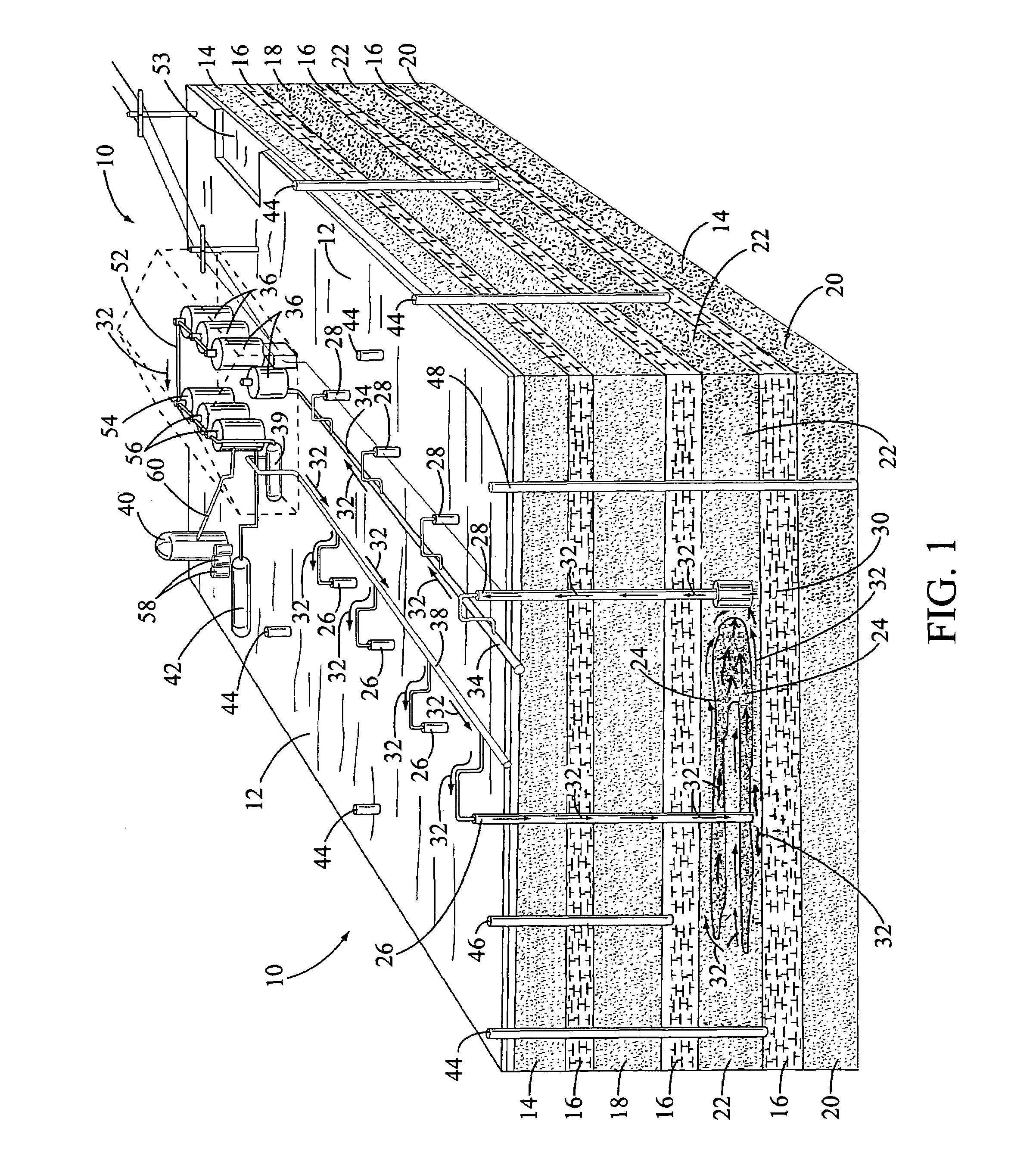Process for restoration of ground water used in in-situ uranium mining
a technology for ground water and mining, applied in the field of ground water restoration of mining, can solve the problems of creating dangerous atmosphere, fatal to humans, and patents that don't disclose or mention the interaction of circulating ground water through mineralized sandstone formations
- Summary
- Abstract
- Description
- Claims
- Application Information
AI Technical Summary
Benefits of technology
Problems solved by technology
Method used
Image
Examples
Embodiment Construction
[0020]In-situ leach uranium mining is a process that makes viable the mining of ore deposits that normally would not be economical, by mining the ore “in place”. The process involves an addition of an oxidant to mineralized ground water in order to oxidize the uranium from the less soluble +IV valence state to the more soluble and mobile +VI valence state. This process increases the concentration of uranium in the ground water, which is then recovered from the ground water using the mining operation's surface facilities. The surface facility, shown in FIG. 1, is an illustration of the Highland Uranium Project located in the southern Powder River Basin in Wyoming. This property is owned by the assignee of record of this patent application.
[0021]During the in-situ mining process, however, additional redox sensitive metals can also be oxidized and become more soluble, which increases their concentrations in the ground water. For example, selenium and arsenic are oxidized to a more solu...
PUM
| Property | Measurement | Unit |
|---|---|---|
| concentration | aaaaa | aaaaa |
| concentration | aaaaa | aaaaa |
| valence state | aaaaa | aaaaa |
Abstract
Description
Claims
Application Information
 Login to View More
Login to View More - R&D
- Intellectual Property
- Life Sciences
- Materials
- Tech Scout
- Unparalleled Data Quality
- Higher Quality Content
- 60% Fewer Hallucinations
Browse by: Latest US Patents, China's latest patents, Technical Efficacy Thesaurus, Application Domain, Technology Topic, Popular Technical Reports.
© 2025 PatSnap. All rights reserved.Legal|Privacy policy|Modern Slavery Act Transparency Statement|Sitemap|About US| Contact US: help@patsnap.com



